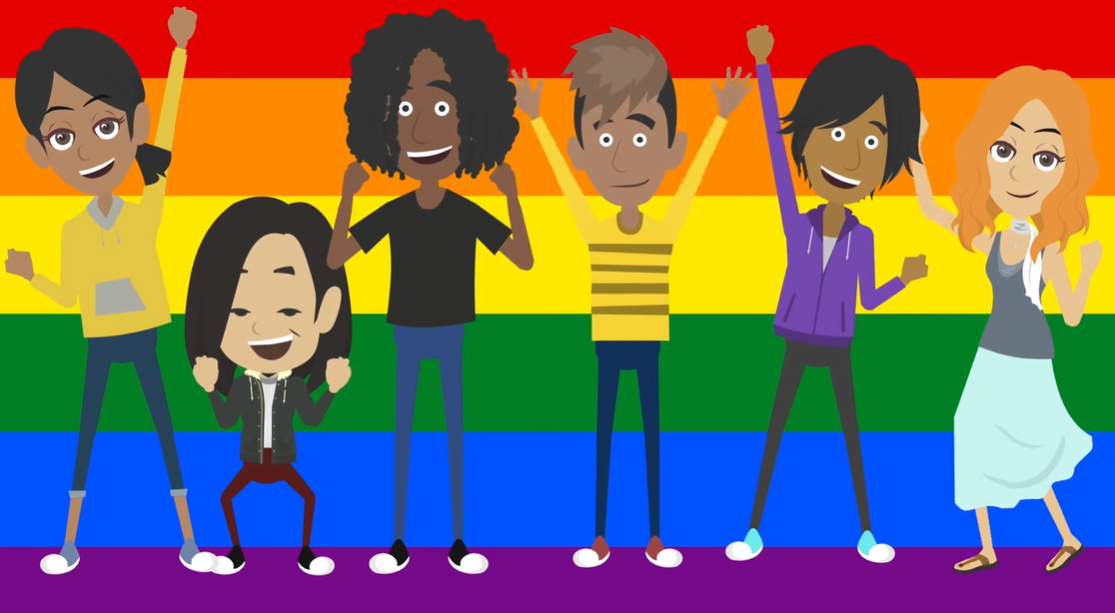
|
|
June 2023 | Issue 16
The Grantee Connection is a quarterly digest featuring new and noteworthy products, information, and lessons learned from select Children's Bureau discretionary grants to inform research, capacity building, and program improvement efforts.
Featured Grantees
|
Assessing the Cultural Competence of Support Services
Project Description: AdoptUSKids, funded through a 5-year cooperative agreement in 2022, is a national project working to ensure that children and teens in foster care get safe, loving, permanent families. As part of its mission, AdoptUSKids assists U.S. states, territories, and tribes to recruit, engage, develop, and support foster and adoptive families. Professionals can request free tailored support from consultants and access relevant resources, including webinar recordings, discussion guides, and tools.

Project Highlight: Child welfare agencies have a responsibility to recruit and support foster and adoptive families of color to meet the needs of youth who are overrepresented in foster care—including Black, Indigenous, and Latinx youth. AdoptUSKids created a tool for agencies to assess the racial and ethnic cultural competence of their support services. This tool helps professionals understand the impact of unconscious biases, assess their support services using a rubric, and review their results with an eye toward making change.
Learn More: Find more tools and resources on promoting cultural competence, including a discussion guide for supporting racial identities for children from diverse racial and ethnic backgrounds, and other helpful materials on the AdoptUSKids’ website.
Photo from Supporting a Positive Racial Identity for Black, Indigenous, and Other Children of Color in Transracial Placements
|
Cultivating a Sustainable Workforce
Project Description: The National Child Welfare Workforce Institute (NCWWI) is a 5-year cooperative agreement, awarded in 2016, to build the capacity of child welfare professionals and improve the organizations that recruit, train, supervise, manage, and retain them.

Project Highlight: Earlier this year, NCWWI launched a Breakthrough Series Collaborative to improve the recruitment and retention of the child welfare workforce and build cultures that value justice, equity, diversity, and belonging. NCWWI is working with five tribal and nine public multilevel teams over the next 18 months to build antiracist, anticolonial child welfare programs that support the well-being of the workforce and the families and communities they serve. Teams will design and test change strategies using the Plan-Do-Study-Act method—small tests of change strategies guided by a collaborative change framework based on the Surgeon General’s Framework for Workplace Mental Health and Well-Being. To learn more about the teams and the collaborative change frameworks, visit the Breakthrough Series Collaborative webpage. If you would like to receive updates, sign up for NCWWI's newsletters.
Learn More: Visit NCWWI’s resource library to find briefs, tools, reports, and other relevant resources addressing recruitment, equity, and more.
Photo provided by NCWWI
|
 |
Setting the Tone for Authentic Engagement of Children and Youth
Project Description: The Quality Improvement Center on Engaging Youth in Finding Permanency (QIC-EY) is a 5-year cooperative agreement funded in 2021 to bring about systemic culture shifts resulting in intentional policy and practice changes directly related to the child welfare system’s engagement and empowerment of and partnership with children and youth. The QIC-EY is informed by the lived experiences and professional expertise of youth formerly in foster care.

Project Highlight: With the QIC-EY’s definition of authentic engagement of children and youth now developed and the pilot sites engaged, a second foundational lesson for child welfare professionals has emerged—and it starts at the top. Although senior-level leaders do not always engage directly with clients, by valuing and modeling relationship building within their organizations, they can create the conditions for staff members to maximize authentic engagement with children and youth. When leaders recognize and prioritize relationship building throughout an organization, agency, or system, they can blaze a path for shared decision-making, ensuring that children and youth are at the center of child welfare work. This ultimately will benefit not only the children and youth served but also the system overall.
Wondering how to apply this to your work? Leaders go first and pave the way. As a child welfare leader, you can act right now to leverage QIC-EY lessons learned to inspire your work and the work of your staff. Leaders drive how their agencies, organizations, or systems actively and intentionally partner with children and youth. To begin applying this lesson, ask yourself the following questions:
- As you lead staff members who engage directly with children and youth, are you modeling and exhibiting characteristics that encourage authentic engagement?
- Do the staff whom you lead feel valued, included, and part of the decision-making process?
- As you and the teams you lead work to provide safety, permanence, and well-being for children and youth, how are you supporting your staff members by valuing those same priorities for them?
- Are your staff members equipped with the skills, resources, and tools they need to engage authentically with children and youth?
Learn More: To bring this lesson to life, the QIC-EY talked with Addie D. Williams, J.D., former president and chief executive officer of Spaulding for Children, in a recent podcast on how leaders can set the tone to drive authentic engagement. To learn more about the QIC-EY’s Lessons Learned series, visit the QIC-EY’s products page.
Graphic from "QIC-EY Podcast: Lessons Learned - Addie Williams"
|
 |
Measuring Diversity, Equity, and Inclusion in the Workforce
Project Description: The Quality Improvement Center for Workforce Development (QIC-WD), a 5-year cooperative agreement funded in 2016, was developed to implement and evaluate strategies to strengthen the child welfare workforce. In partnership with eight public child welfare jurisdictions, the QIC-WD is studying interventions related to job redesign, telework, technology, onboarding, supportive supervision, hiring, organizational culture and climate, and job-related secondary traumatic stress. The QIC-WD website has information about project sites, workforce analytic tools, and tips derived from the expertise and experience of the QIC-WD team.

Project Highlight: Some child welfare professionals have stated that there is a critical need for systemic changes to improve diversity, equity, and inclusion (DEI). But where do child welfare agencies begin? This QIC-Tip discusses strategies to measure DEI that can lead to an understanding of the composition, needs, and perspectives of the workforce. The QIC-WD also held a webinar to discuss measuring DEI further, reflect on those DEI measures, and provide strategies to help child welfare agencies plan for the future. The webinar slide deck is also available.
Learn More: View an aggregated list of additional tools and resources on measuring DEI from the QIC-WD and other national organizations.
Graphic from "Measuring Diversity, Equity and Inclusion in Your Child Welfare Workforce"
|
Supporting Youth Through Text and Chat Hotline Services
Project Description: The Prevent Abuse of Children Text and Chat Hotline (PACTECH) project was awarded to Childhelp, Inc., in 2018 to plan, implement, and research text and chat services in the hotline environment that serve youth ages 13–24 years and focus on the primary issue of child maltreatment.

Project Highlight: From the availability of information online to the numerous worldwide platforms on which people can interact, technology influences how people communicate and the dynamics of personal and professional relationships. It is important for victim services, specifically in the hotline and helpline industry, to acknowledge and respond to these changes to best serve young people affected by maltreatment. Childhelp, Inc., published a brief discussing key recommendations and best practices for implementing text- and chat-based hotline services. The recommendations and best practices are informed by findings gleaned over a 4-year period of program operations and collaboration with researchers through the PACTECH project. The brief addresses topics such as staffing and training and legal considerations and offers 10 lessons learned.
Learn More: Find additional resources from the PACTECH project, including pilot data, research findings, and topical briefs, on the hotline research page.
Image from Supporting Youth Through Text and Chat Hotline Services: Key Considerations and Implementation Recommendations
|
|
Grantee Blog:
Celebrating Pride and National Reunification Month
 Graphic from "Support for LGBTQ Youth Starts at Home: An #AsYouAre Project"
June is both LGBTQIA2S+ (lesbian, gay, bisexual, transgender, questioning, intersex, asexual, Two-Spirit, or other gender or sexual identity) Pride Month and National Reunification Month. To honor both, we are highlighting family programming for families of youth who are LGBTQIA2S+. Family support and affirmation are incredibly important to a young person’s health and well-being outcomes. When LGBTQIA2S+ youth tell their families about their identity, some families may react with fear, worry, guilt, or a host of other emotions that could result in their child experiencing symptoms of depression, anxiety, or even thoughts and attempts of suicide (Ryan, et al., 2010). To learn more about the importance of family support, watch the animated short "Support for LGBTQ Youth Starts at Home: An #AsYouAre Project."
It is critical that child welfare agencies and their partners consider providing services and resources to families who are struggling to support their child’s sexual orientation, gender identity, or expression (SOGIE). The National Quality Improvement Center on Tailored Services, Placement Stability, and Permanency for LGBTQ2S Children and Youth in Foster Care, a Children’s Bureau-funded project, worked with program purveyors and child welfare agencies across the country to implement and evaluate several programs that support LGBTQ+ youth by working with their families and caregivers on affirming behaviors. For example, Youth Acceptance Project is a clinical model that works with families of LGBTQ+ youth to address their fears and worries related to their youth and help the family learn new and supportive behaviors to improve their youth’s well-being. Visit the National SOGIE Center to find out more about the programs. Each program’s page describes the content, audience, available data, and how to get the program to your agency.
-
AFFIRM Caregiver is an evidence-informed manualized intervention delivered through seven sessions to enhance affirmative parenting practices that promote the safety and well-being of LGBTQ+ youth.
-
Chosen Affirming Family Finding (CAFF) is designed to work with LGBTQ+ youth involved with the child welfare system who need or want to expand their family network, including chosen family. CAFF helps youth identify people in their lives who can provide support now and throughout their lives. CAFF then works with those people to help them understand the young person’s LGBTQ+ identity and the best ways to affirm and support the youth’s identity and transition into adulthood.
-
The Family Acceptance Project provides research and education on the importance of family acceptance and support. The project developed a website specifically for families seeking resources and support.
To learn more about family reunification in general, visit the National Quality Improvement Center on Family-Centered Reunification.
|
Resources From
Child Welfare Information Gateway

Reunifying Families
Visit the webpage.
|

Protecting the Rights and Providing Appropriate Services to LGBTQIA2S+ Youth in Out-of-Home Care
Read the publication.
|

“What Does an Effective Support System Look Like?”
Listen to the podcast.
|
Grantee News & Updates
- The Children’s Bureau recently published new fiscal year 2023 discretionary grant Notice of Funding Opportunities. Tip: Filter search results by Administration for Children and Families - ACYF/CB [HHS-ACF-CB] to only see Children's Bureau opportunities.
- Looking for more information on applying for Children’s Bureau grants? Visit the How to Apply for a Grant web section to learn about the complete process—from finding notices of funding opportunities to writing and submitting a strong application.
- Interested in supporting the Children’s Bureau discretionary grant process? Apply today to be a grant reviewer!
Are you a Children's Bureau grant recipient? SUBMIT YOUR UPDATES AND RESOURCES!
|
|